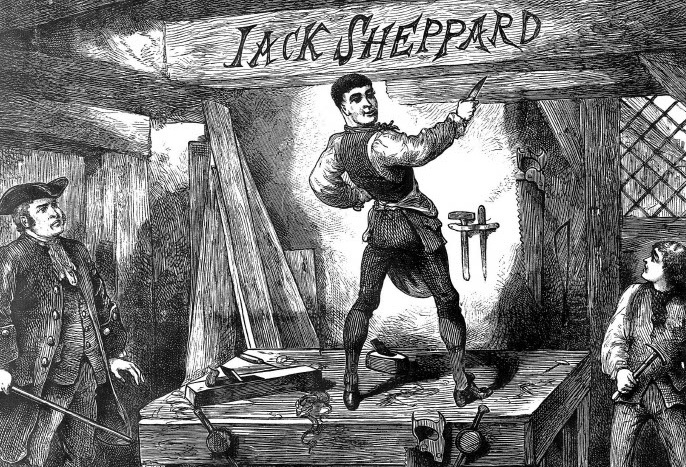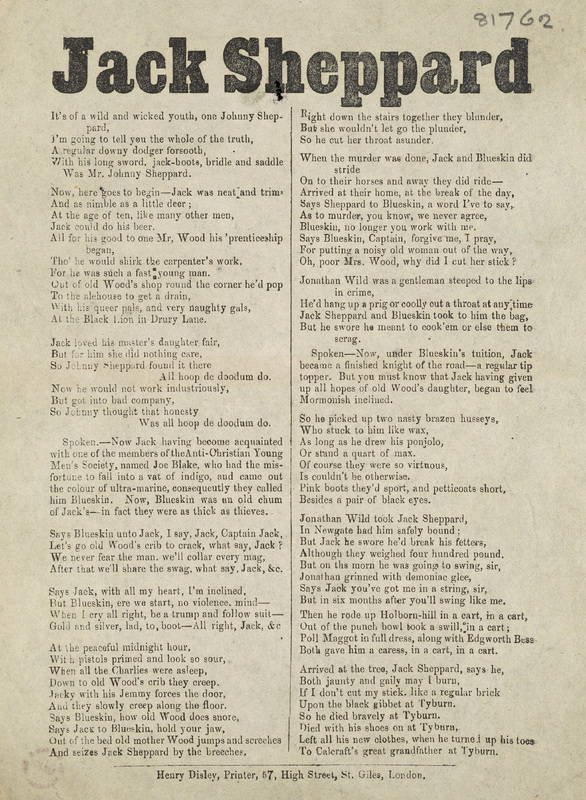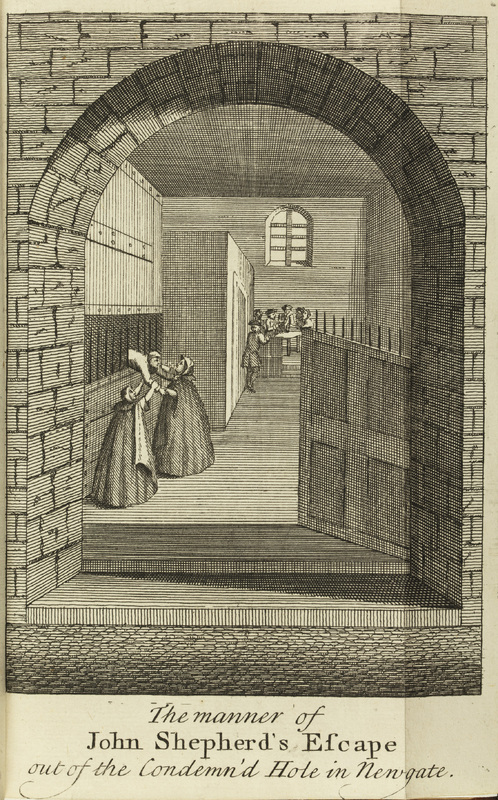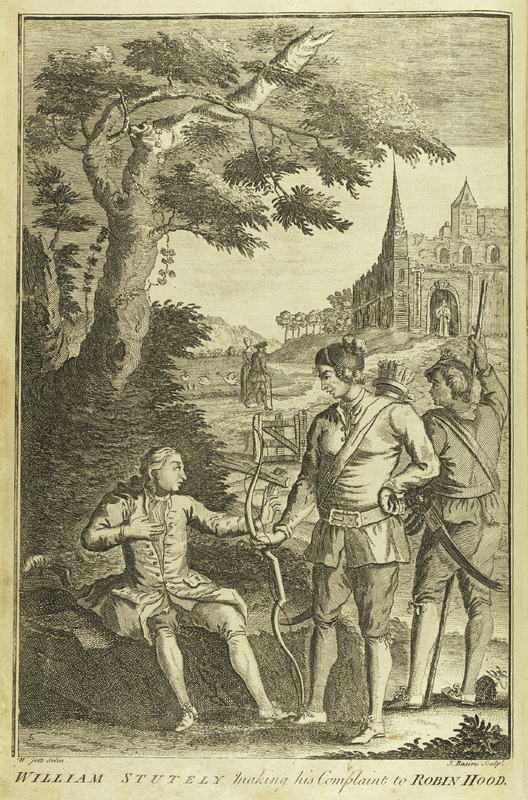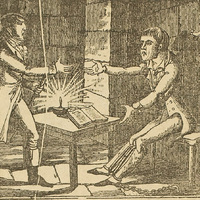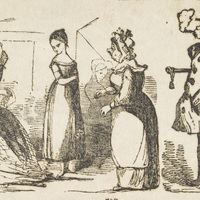Exhibit Contents
- Crymes and Rhymes
- Criminal Celebrities
Criminal Celebrities
Apprenticed as to a carpenter and locksmith in his youth, Jack Sheppard (1702-1724) would later become a housebreaker of great notoriety. He became a hero to the criminals of London and later, a favored figure in ballads, plays and novels, because of his amazing escapes from London's prisons.
He performed his final and most impressive escape from the heavily secured "Castle" of Newgate Prison while double-ironed, handcuffed, and chained to the floor. He unchained himself and broke through six successive locked rooms before rappelling down the tower with a bedsheet to secure his freedom. After this daring feat, London officially caught Sheppard-mania. Balladeers on every corner sang of his cleverness and the incompetence of London's thief-takers.
Unfortunately for Sheppard, he refused to flee the city and was later caught for the fifth time and publicly executed; an event for which many employers gave their workers the day off to attend.
This particular ballad was written approximately a full decade after Sheppard died in 1724, evidence of his lasting hold on the public imagination. The ballad mentions the highwayman Joseph "Blueskin" Blake, an accomplice of Sheppard known for his violent inclinations. Sheppard and Blake did work together to rob Jack's apprentice-master. However, the accounts of this ballad are only partially correct. Sheppard was Wood's apprentice in carpentry, but before that, he was apprenticed to William Kneebone. Kneebone, rather than Wood, was the victim of this betrayal. There is also no record of Sheppard killing Mrs. Wood.
"A narrative of all the robberies, escapes, &c. of John Sheppard" is thought to have been ghostwritten by Daniel Defoe, though the original author is unconfirmed. He would have based this account on his conversations with Jack Sheppard at Newgate prison. The biography sold “quickly and abundantly” on the day of Sheppard’s execution and is credited with much of Sheppard’s celebrity. This woodcut print depicts Sheppard’s escape from the condemned hold of Newgate in broad daylight with the help of his lovers and accomplices, Elizabeth Lyon and Poll Maggot.
This volume of tales and ballads demonstrates the public desire for stories of crime, even in the elite social circle that could purchase such a large and well-illustrated history. Robin Hood is perhaps the most legendary criminal narrative. Many stories of this mythic figure were told as ballads, the earliest surviving, “Robin Hood and the Monk,” dating back to the 15th century. Both Jack Sheppard and Blueskin Blake can also be found in this collection.
